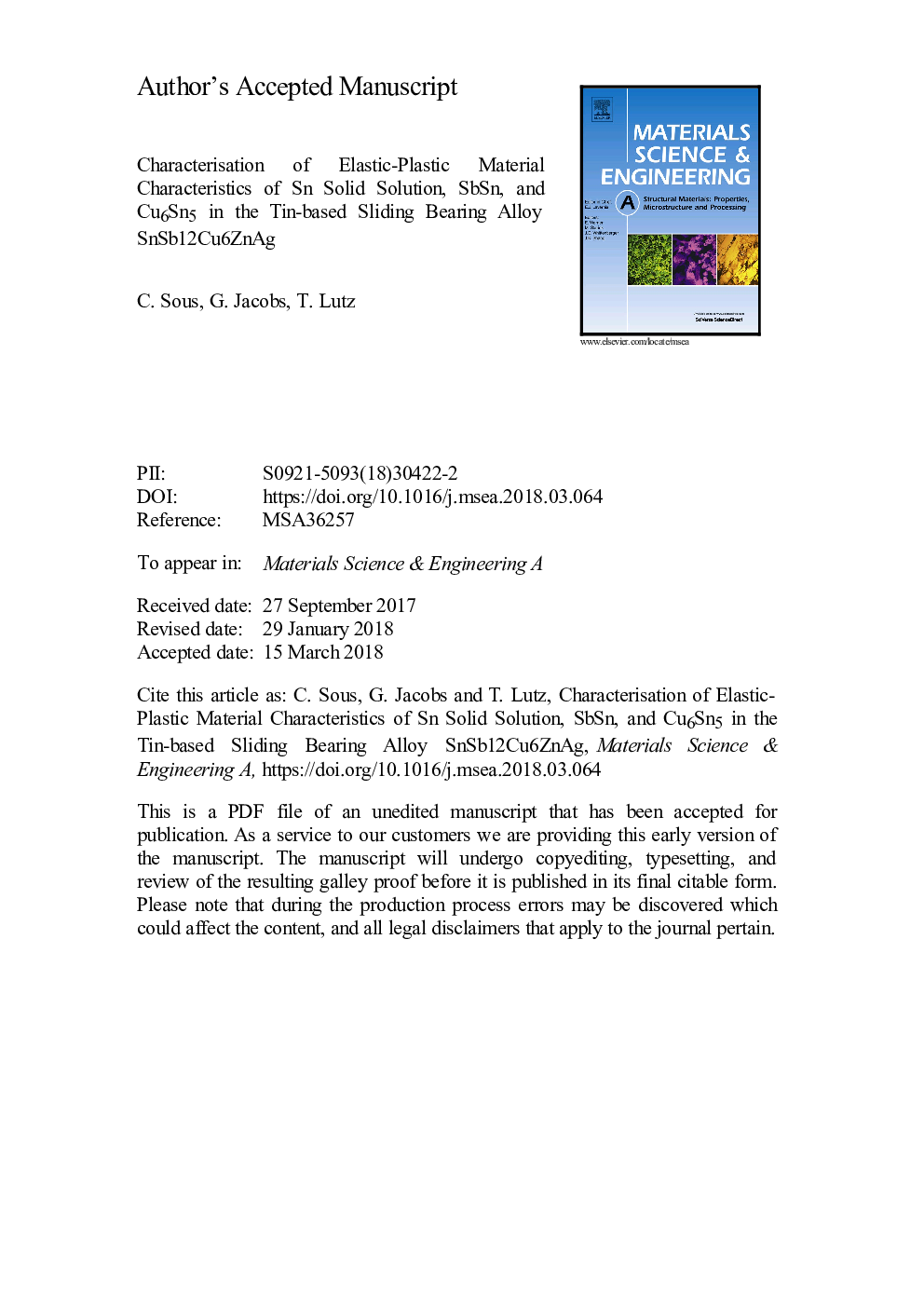| Article ID | Journal | Published Year | Pages | File Type |
|---|---|---|---|---|
| 7972589 | Materials Science and Engineering: A | 2018 | 14 Pages |
Abstract
In order to allow the stress calculation for the structure of dynamically stressed tin-based alloys for plain bearings, knowledge about the material behaviour of the structural constituents of the alloy is required. The individual microstructural phases of the alloy SnSb12Cu6ZnAg were identified in Energy Dispersive X-ray Spectroscopy (EDX) analyses. The phases are the Sn solid solution, antimony-tin precipitates (SbSn), and copper-tin precipitates (Cu6Sn5). Nano-indent measurements were performed and evaluated in a phase-specific manner. Thus, the elastic-plastic material characteristics could be determined for each phase. For the calculation of the characteristic values from the measurement results, different approaches as well as the influence of the variation in correction factors were considered. Furthermore, finite element (FE) simulations of the nano-indentations were performed and the validity of the calculated material parameters was tested. It was shown that owing to phenomena such as pile-up or residual roughness, the calculated values deviated from simulated ones. Consideration of the elastic-plastic deformations of the sample on the indenter tip in the calculations led to results with the least deviation from those obtained from the FE simulations. A comparison of the calculated material values to those documented in the literature resulted in a satisfactory agreement, which was within the expected uncertainties of the underlying calculation approaches. Only for the tin-rich solid solution could the validity of the derived material characteristics not be ensured. An evaluation of the increase in the load-bearing capacity of the alloy as whole by means of the precipitates revealed that a minimal increase by a factor of 2.6 was possible.
Related Topics
Physical Sciences and Engineering
Materials Science
Materials Science (General)
Authors
C. Sous, G. Jacobs, T. Lutz,
